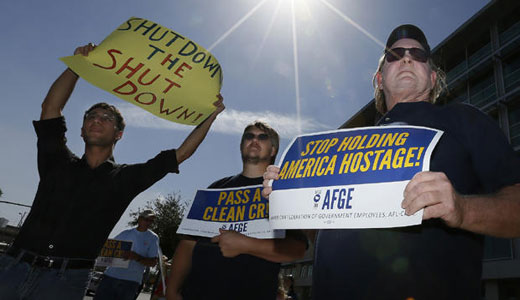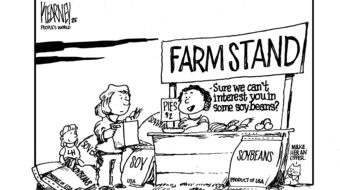
The government shutdown may be officially over but its estimated cost of $24 billion to the American taxpayers will continue to rise every day for a long time to come. And that’s not counting the oceans of misery into which millions have been plunged as a result, and even the deaths that occurred during the shutdown.
Three miners died, for example, in the first days after the government shutdown. The United Mine Workers of America said the shutdown might have been the cause of those deaths. “It is extremely troubling that within a week after the federal government shutdown caused the normal system of mine-safety inspection and enforcement to come to a halt, three miners died,” the union’s president, Cecil Roberts, said.
Roberts explained: “The shutdown means that there are fewer mine inspectors on the job…No regular inspections are taking place, even though they are required by law. The government’s watchdog isn’t watching. Safety violations that would normally be caught and corrected as a result of those inspections are being missed. Even the smallest violations, when allowed to accumulate, can lead to dangerous conditions very quickly in a coal mine.”
Cancer patients who didn’t get the care they needed, veterans denied medical assistance they required, small businesses that didn’t get loans they needed from the government, businesses that have gone or are going out of business because their customers lost their jobs and billions in tax revenue the government has lost are just a few of many costs not included in a new Standard & Poor’s estimate that the shutdown came at a price to the economy of $24 billion.
In an article today thinkprogress.org listed some of the things that could have been purchased for that $24 billion.
The cost to the government of the Troubled Assets Relief Program (TARP) was $24 billion. The price tag for this year’s entire Department of Agriculture budget is even less, $22.6 billion.
All air transportation programs, including the Federal Aviation Administration, security, research and other costs come to $21.9 billion.
$24 billion is also the entire approximate cost of head Start, the Children’s Health Insurance Program (CHIP), and Women, Infants and Children (WIC) programs combined.
Even a business-friendly group of economists is saying now that the Republican resistance to funding the government since 2010 has also cost the economy almost a million jobs.
A report from Macroeconomic Advisers, prepared for the Peter G. Peterson Foundation, estimates the costs of the fiscal uncertainty of the last few years. The model created in the report indicates that Republican brinksmanship has caused certain corporate borrowing rates to go up by 0.38 percentage points, lowered economic growth each year by 0.3 percent, costing at least $150 billion in lost output; and left this year’s unemployment rate higher by 0.6 percentage points. That translates into 900,000 lost jobs.
The compromise bill ending the shutdown, negotiated in the Senate, calls for Senate and House negotiations to reach a long-term federal budget. It also continues the sequester, with even deeper cuts due next year on a budget of about $950 billion. The Budget is already down to the level advocated by GOP Rep. Paul Ryan of Wisconsin before he ran for and lost the job of Vice President.
The Senate deal that ended the shutdown and lifted the debt ceiling meets only the “low bar” of “sanity,” according to Damon Silvers, director of policy for the AFL-CIO. What is needed, he said, is “repeal of the sequester, protection for Social Security, and an end to all tax breaks for outsourcing.”
While J. David Cox, president of the American Federation of Government Employees, said he welcomed the deal he said that the shutdown, engineered by “radical Republican hostage takers out to destroy Social Security and Medicare,” makes it clear that “those who perpetrated this inexcusable catastrophe on the American people should be turned out of office in 2014.”
He also characterized the deal as only a “brief reprieve from the suffering federal employees and their families have endured for the past 16 days. We cannot accept another government shutdown in just a few short weeks; federal workers and the public they serve have suffered enough.”
Cox warned that politicians, in the coming budget negotiations, better keep their hands off Social Security and Medicare. They better not think that now that the crisis is over they can turn their attention to cutting the earned benefits of the American people. The so called chained CPI fix we hear talk about is nothing more than a year after year 3 percent cut to Social Security.”
“Clearly, the direction we have to go in is no more cuts. Let’s have the rich pay there fair share of taxes. If the top 1 percent gave 1 percent more of their income you wouldn’t have to talk about cutting Social Security.”
The Standard & Poor’s estimate of $24 billion worth of damage done by the shutdown amounts to a shutdown-caused 0.6 percent reduction in the gross national product, meaning growth of the economy this year will likely be unable to reach even 2 percent, a growth rate itself considered anemic by most economists.
Photo: Ross D. Franklin/AP









